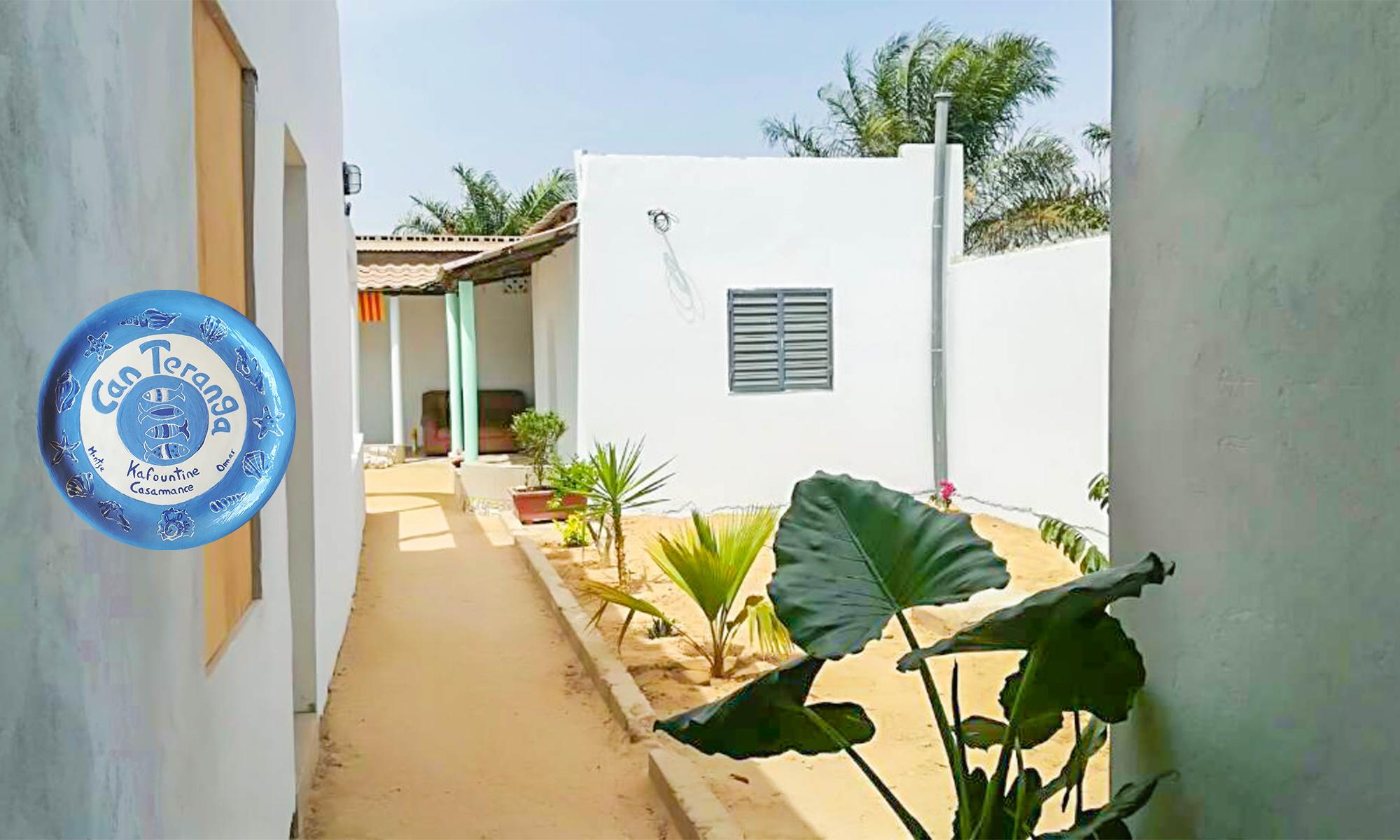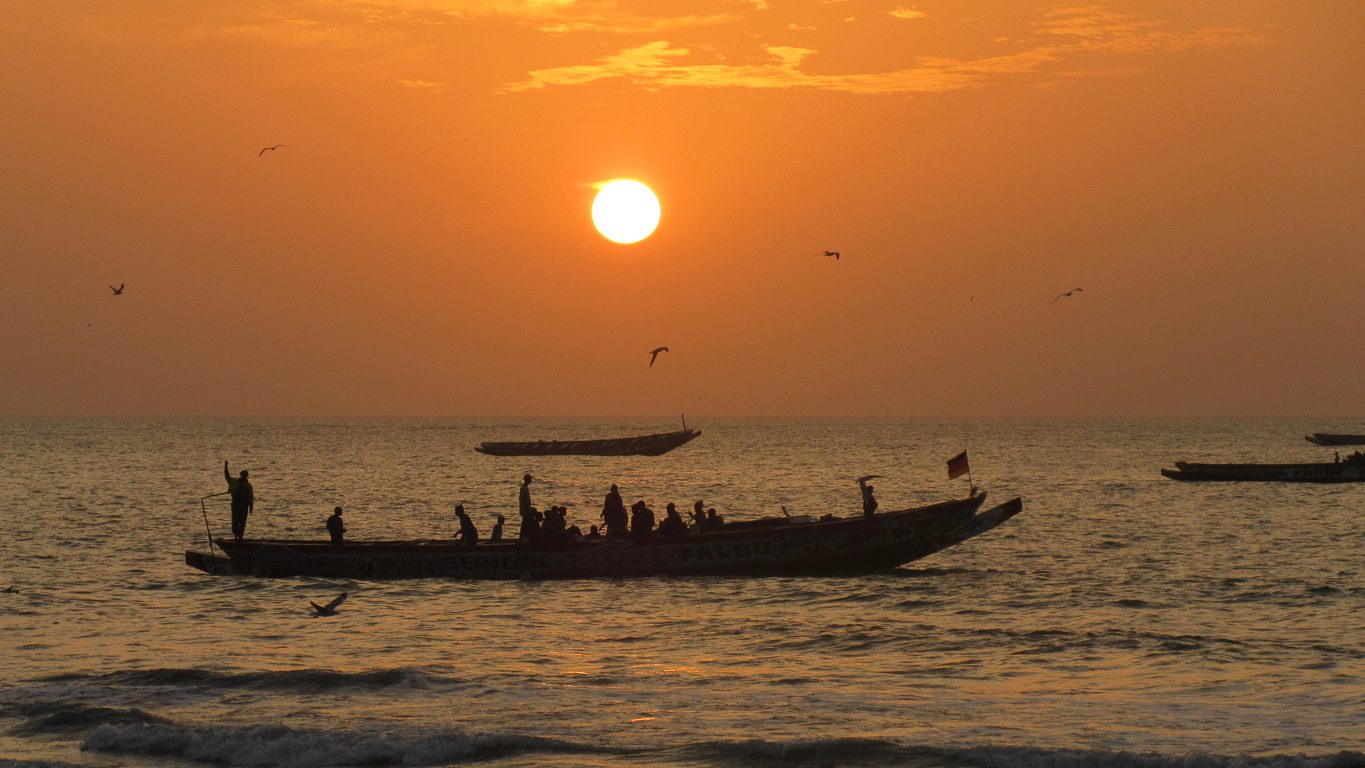General situation
Kafountine is a fishing village in the Casamance region of Senegal, with one border with the Gambia in the North and a South border with Guinea-Bissau. Kafountine is located one hour by car from the airport of Banjul (capital of the Gambia) and two hours from Ziguinchor (Casamance’s capital) where there is an airport with flights to Dakar (capital of Senegal) and a port with a ferry to Ziguinchor.
Climate
There are two seasons in Senegal: the dry season and the rainy (‘hivernage’). During the dry season (November to June) the temperatures are a little softer (between 22°C and 30°C). In the rainy season (July to October) the weather is wet and quite hot though on the coast it’s always smoother due to the sea breeze.
Flora and fauna
Kafountine has a fantastic beach full of ‘filaos’ (large trees of the family of conifers) which extends along 20 km of sand and wild vegetation, without trace of villages or neighborhoods. The interior is made up of a maze of lagoons and streams and several islands with mangrove vegetation that invites the traveller to enter with a “pirogue” (canoe) to explore it’s cozy villages and see the variety of birds that live there. A visit to the botanical garden will teach you the diversity of plant species in the area and help you understand the importance of local medicinal plants.
Culture
In Kafountine the Diola and Mandinga cultures coexist. It is also populated by Senegalese Rastafarians (hence the name of Small Jamaica) and is a meeting place for percussion and African dance groups, artists and artisans who sell their works in the large number of craft shops in the streets. Guests to the area can attent African dance and djembé classes with local artists. We have two major traditional music festivals with djembé and African dance performances: the last week of December in Abéné (asmall village beside Kafountine) and in February the Carnival festival of Kafountine, a few metres from Can Teranga. It is very advisable to delve into the market for vegetables, fish and meat to capture the life and African atmosphere and the port of Kafountine when the large number of fishing pirogues get back from fishing, with their spectacular colors, and see how the fishermen unload their fish.

